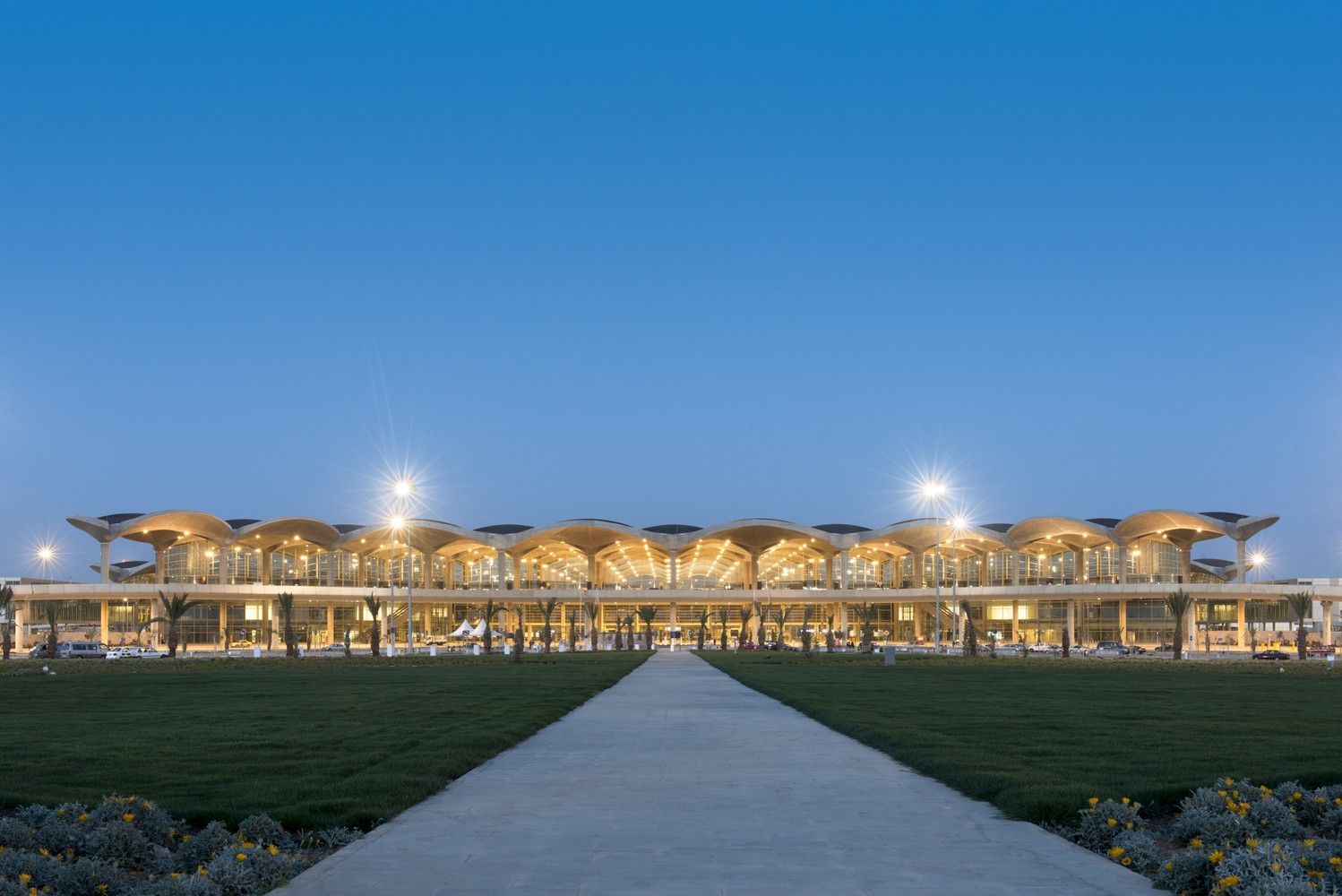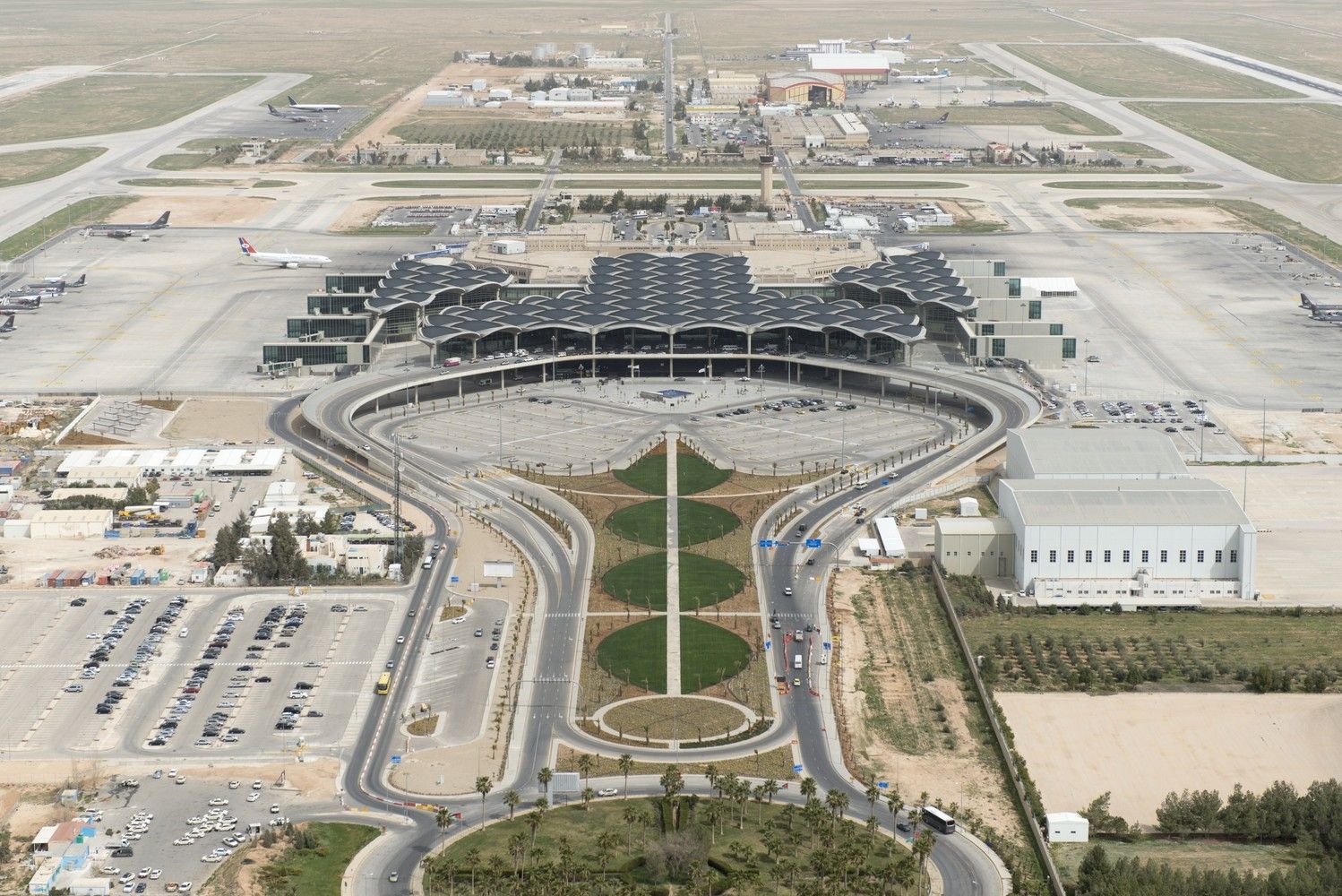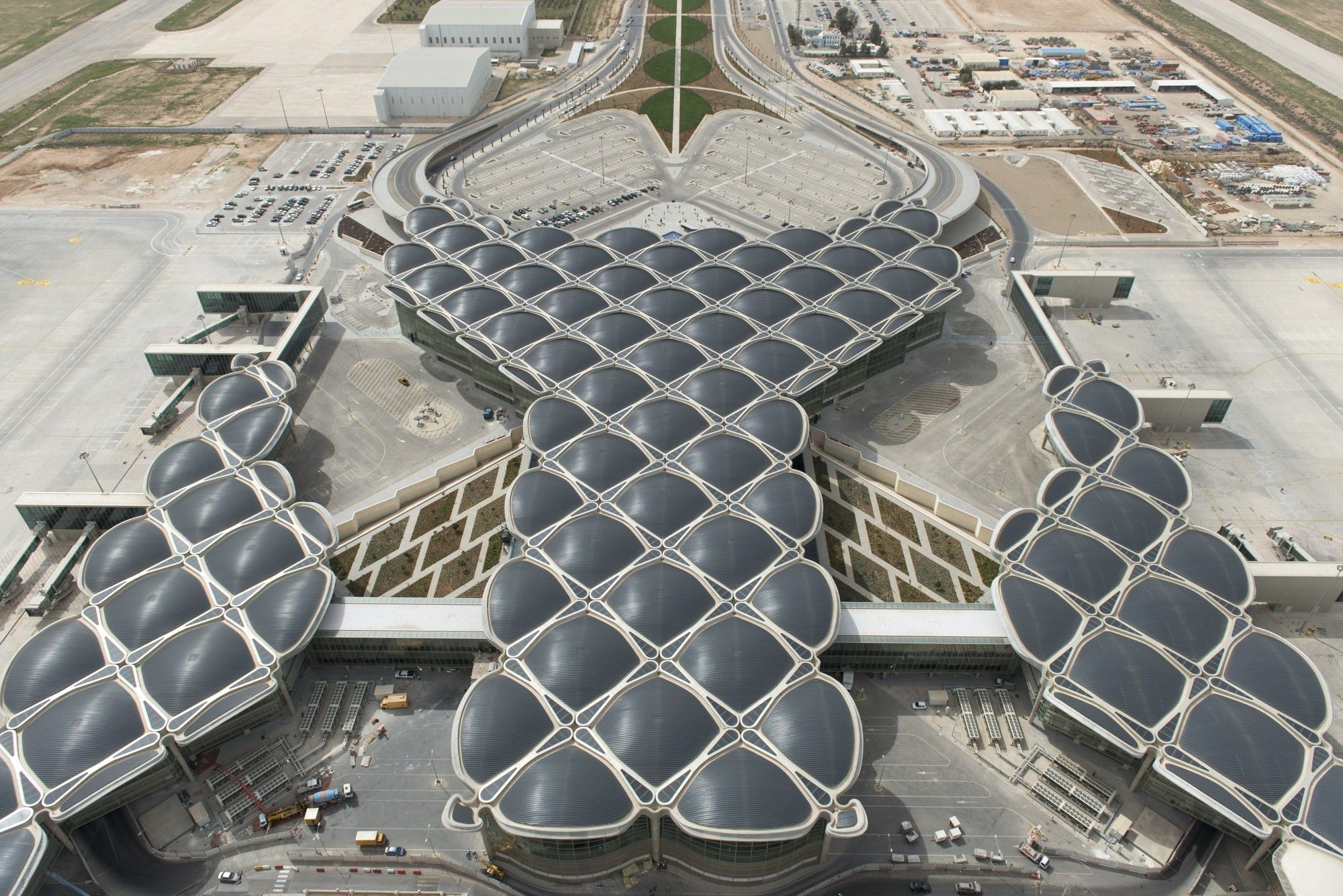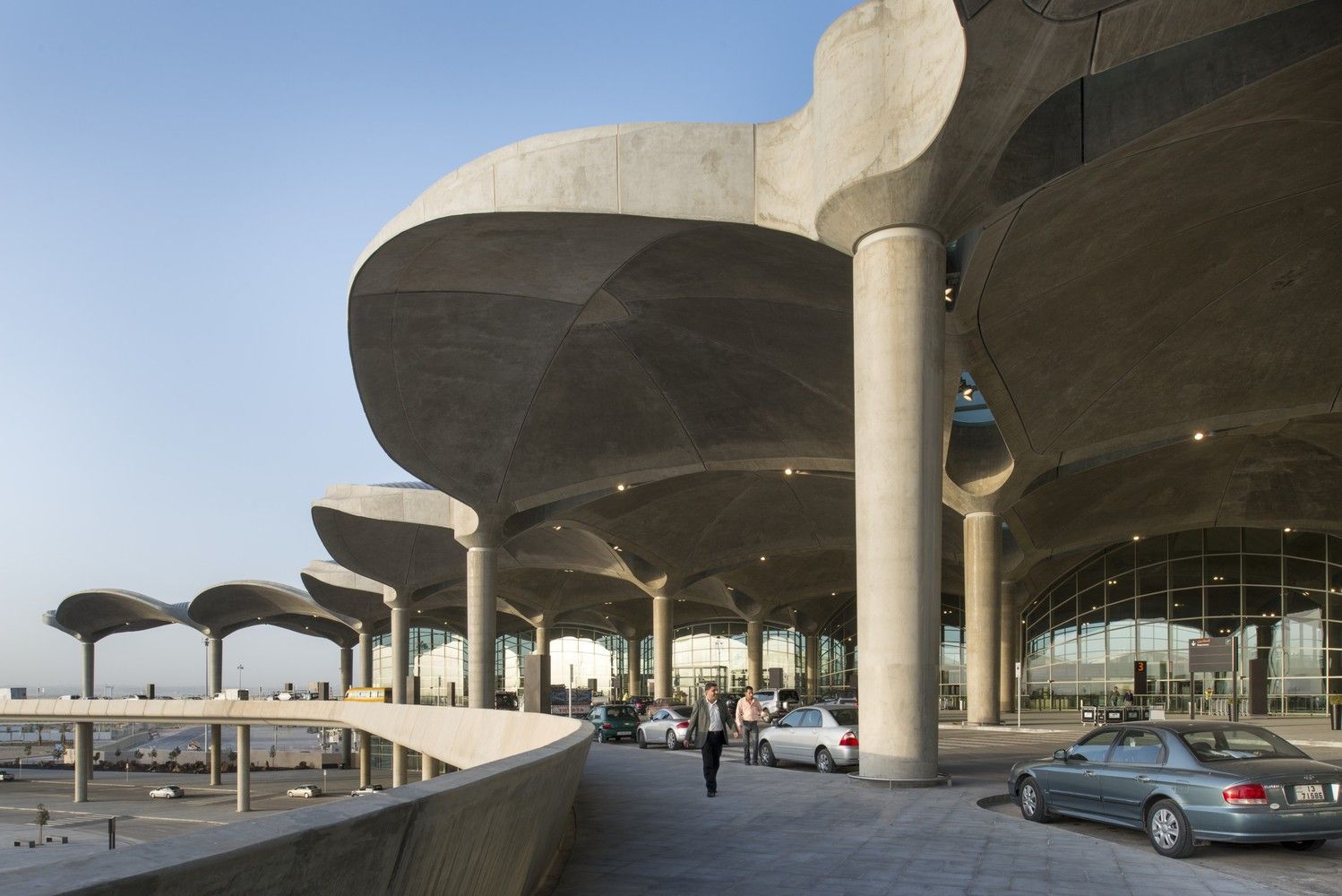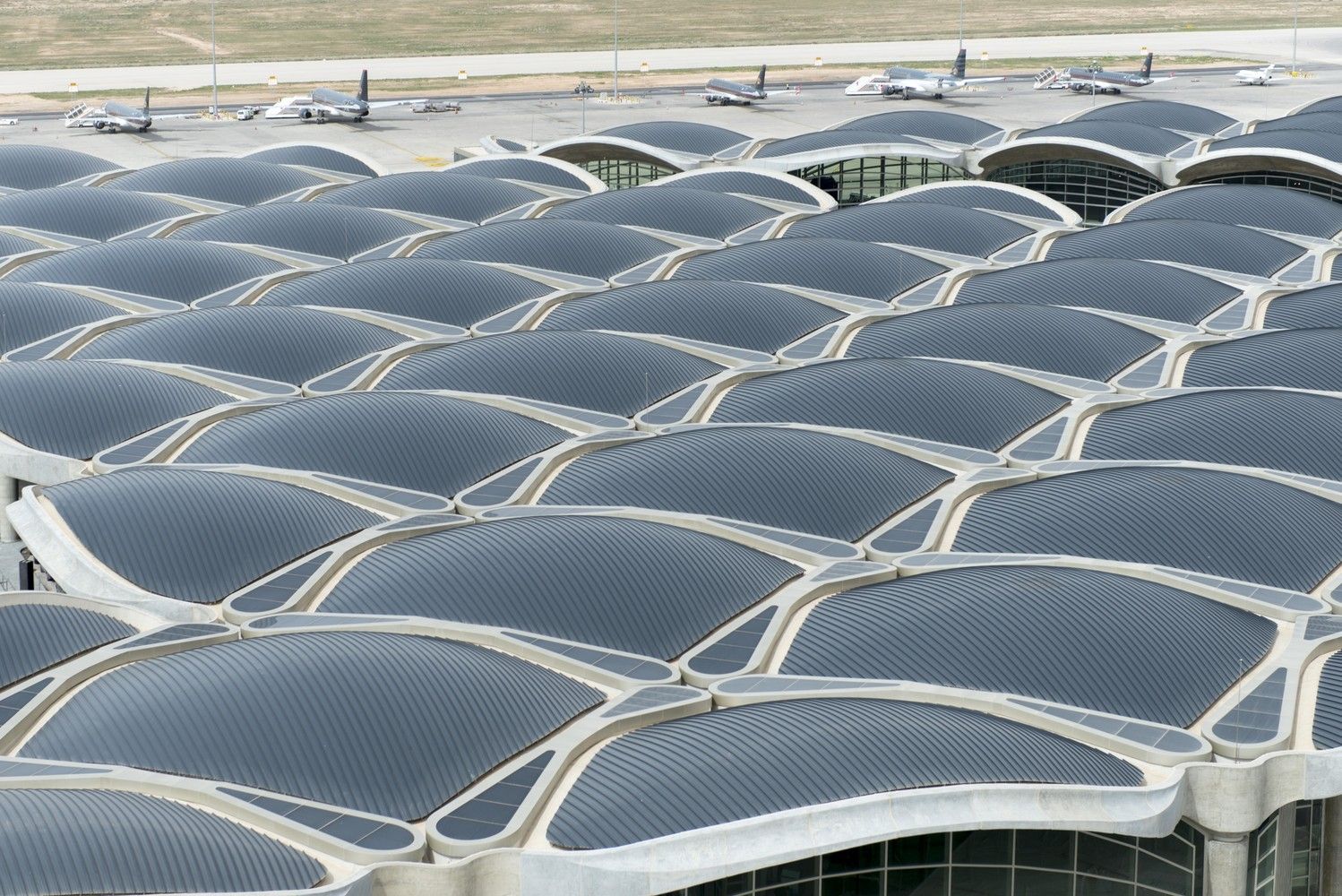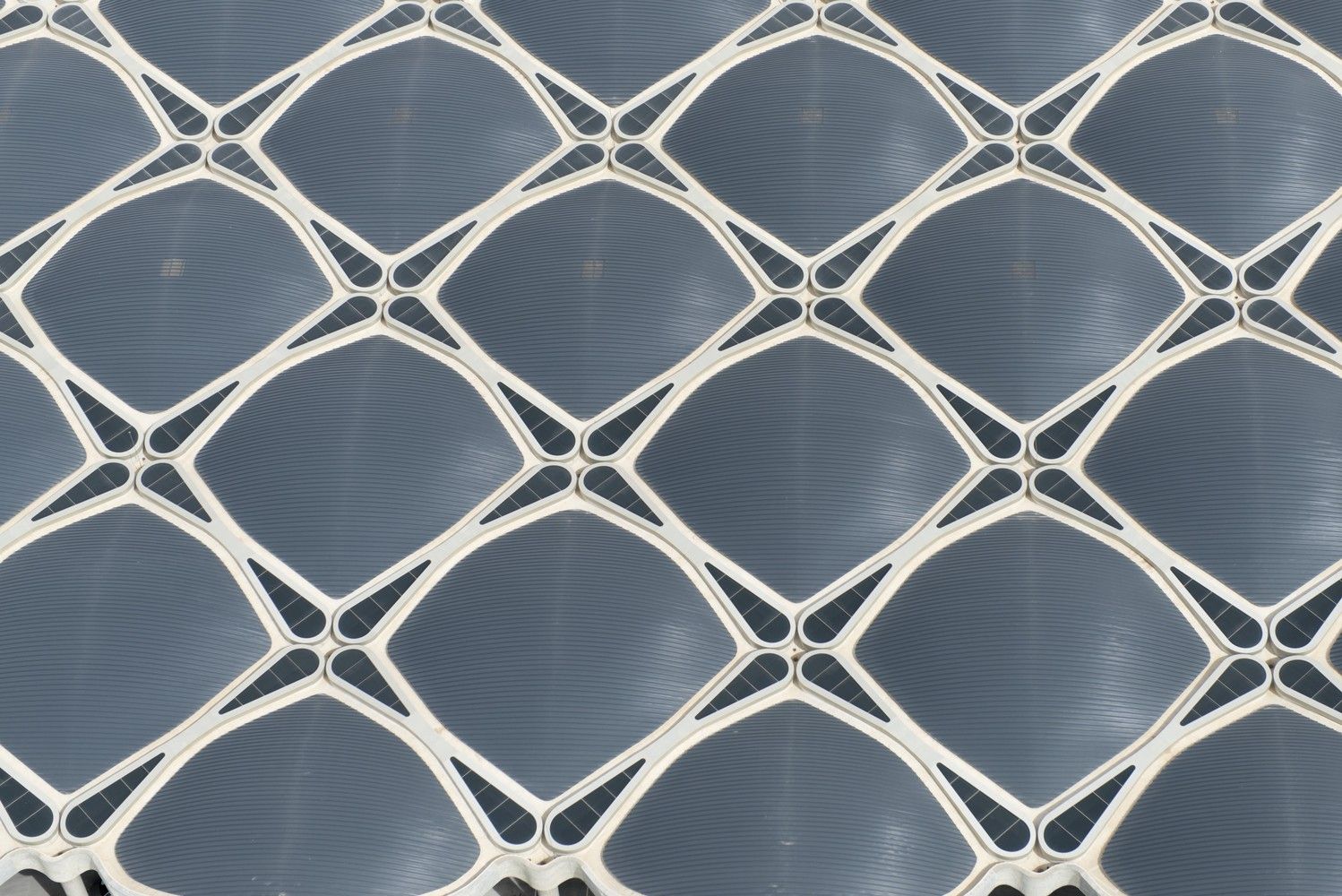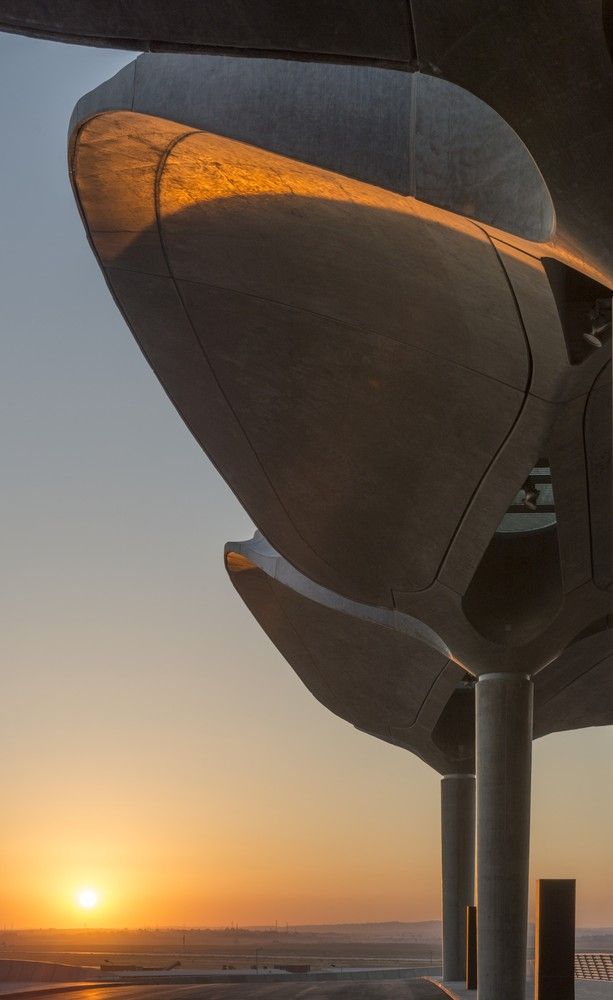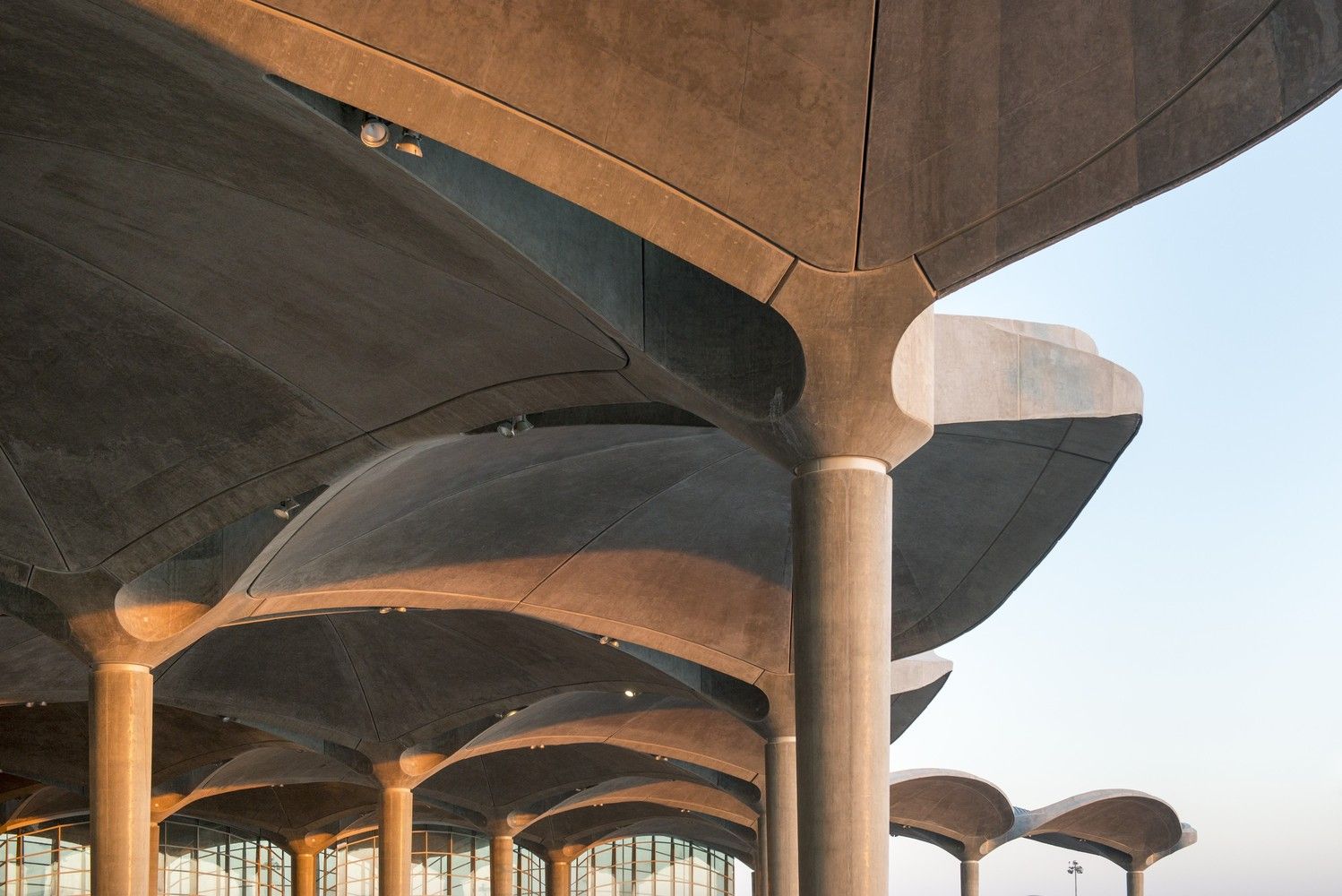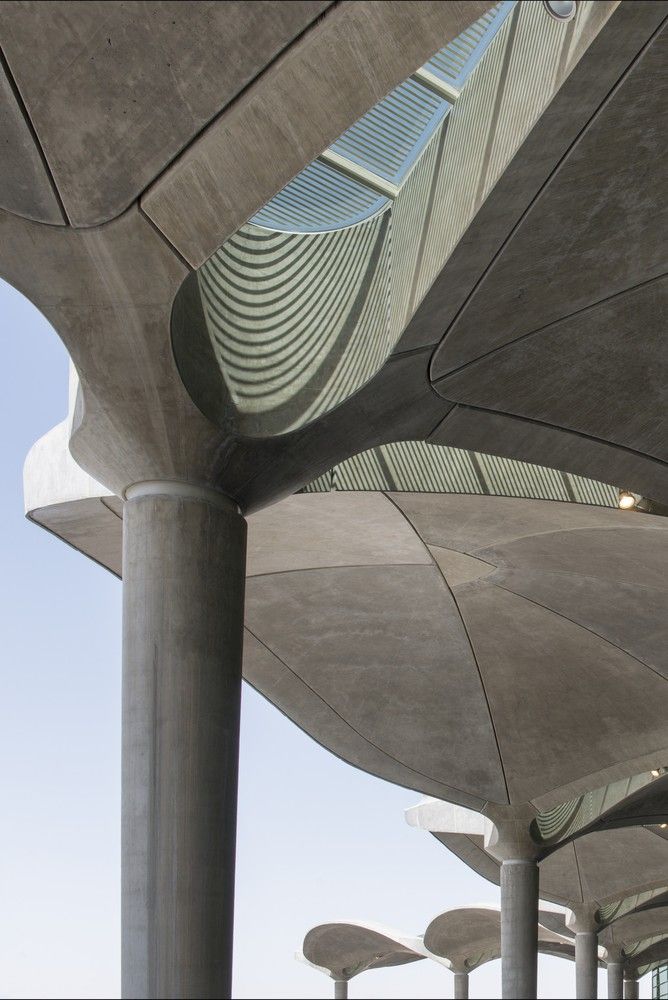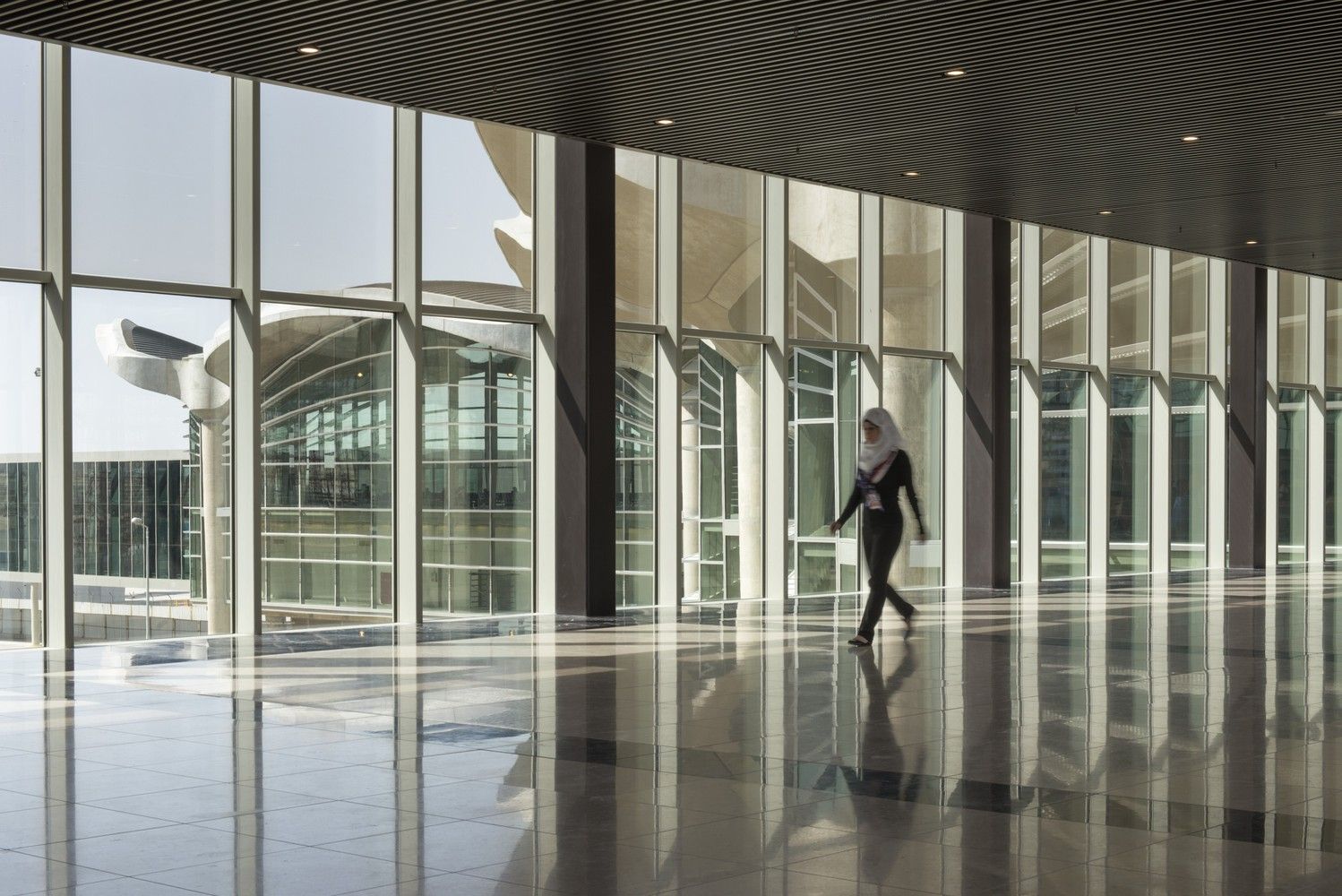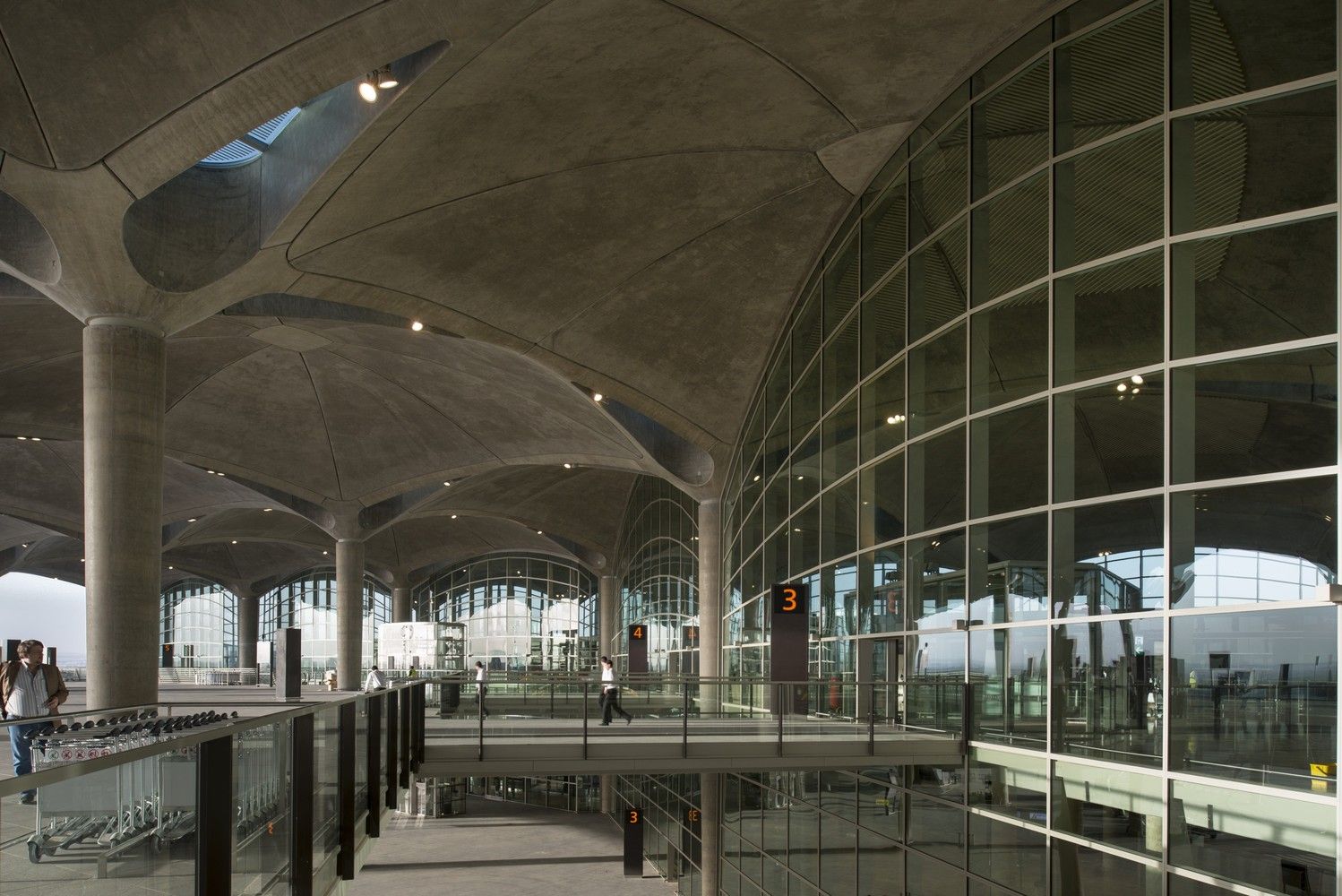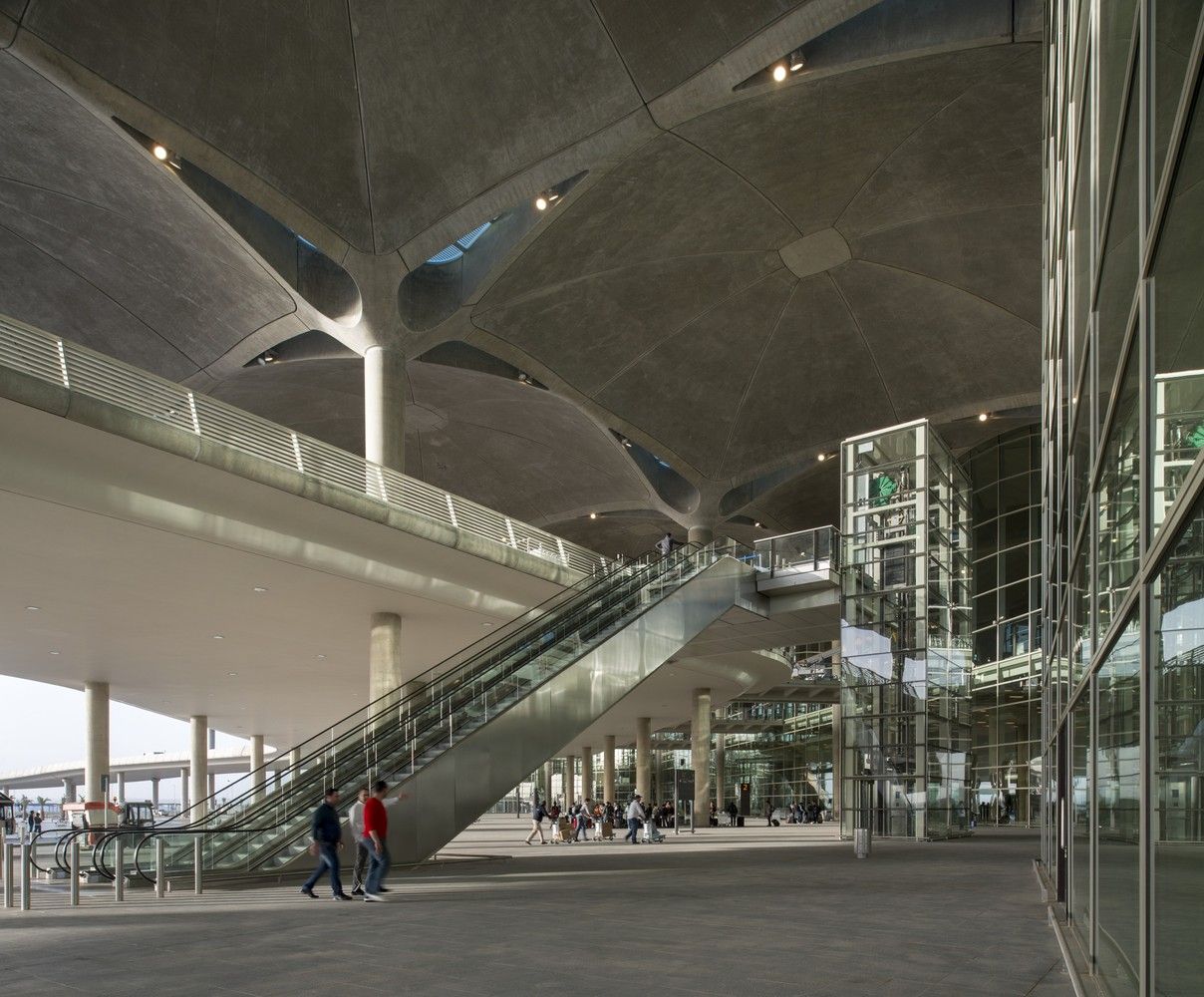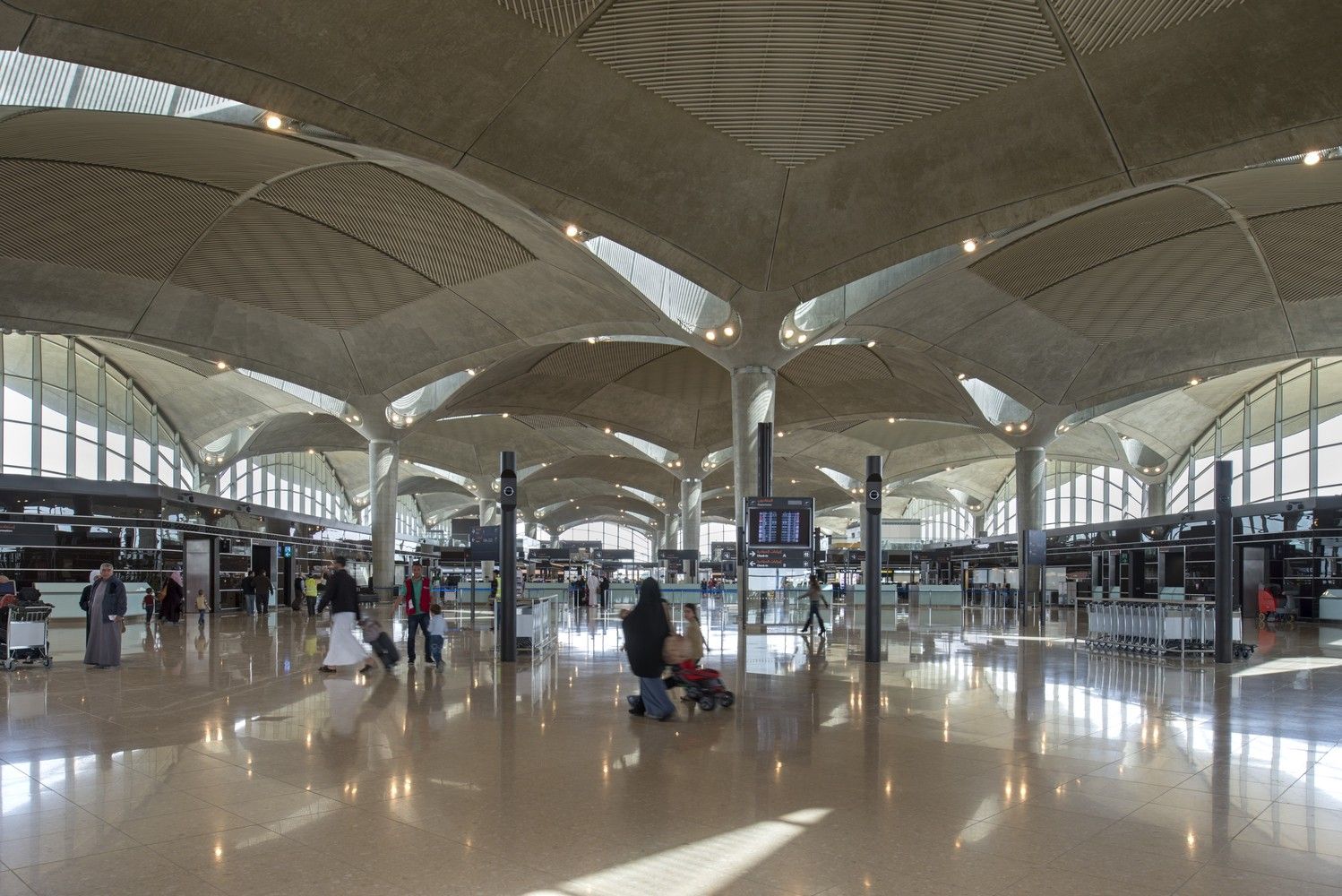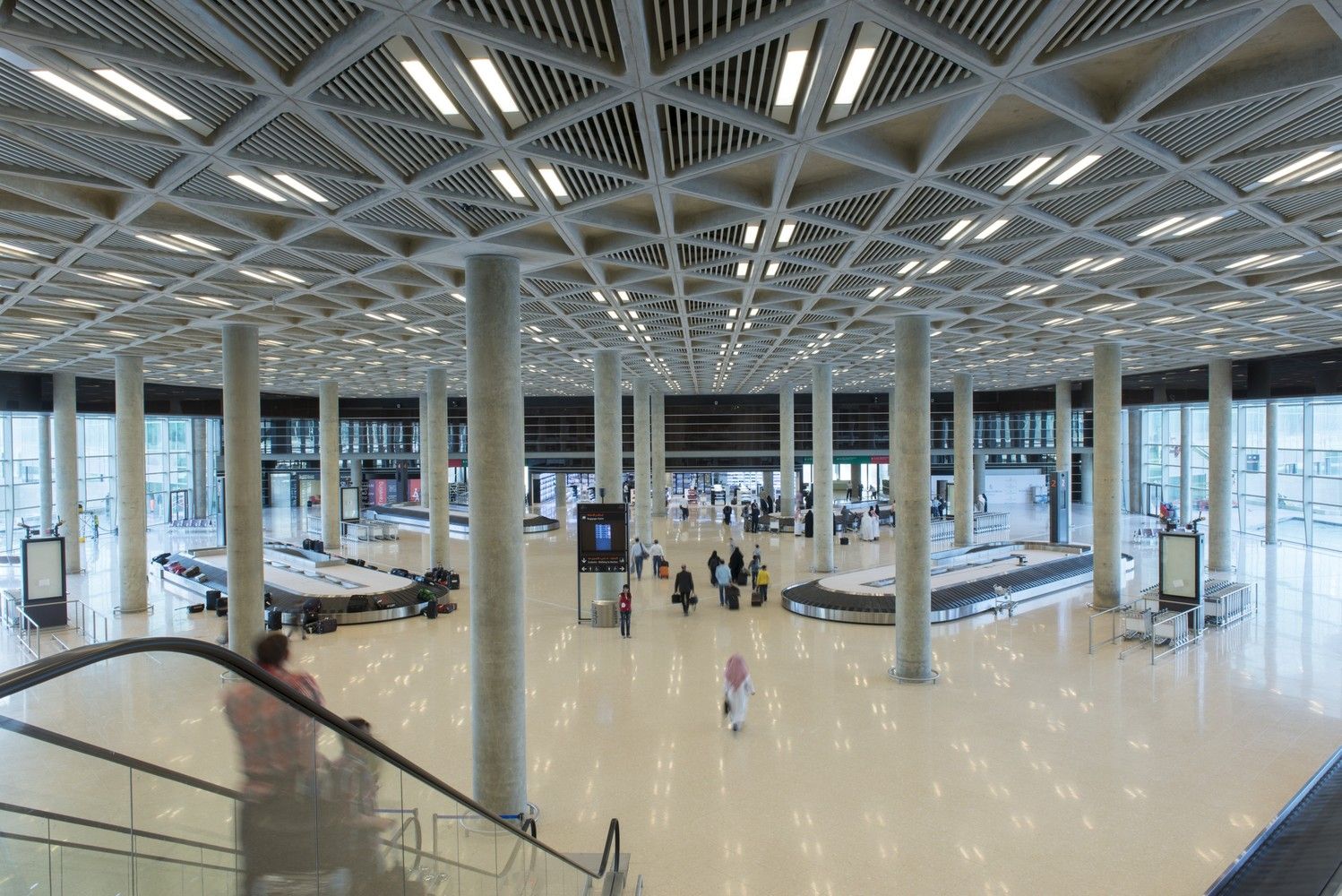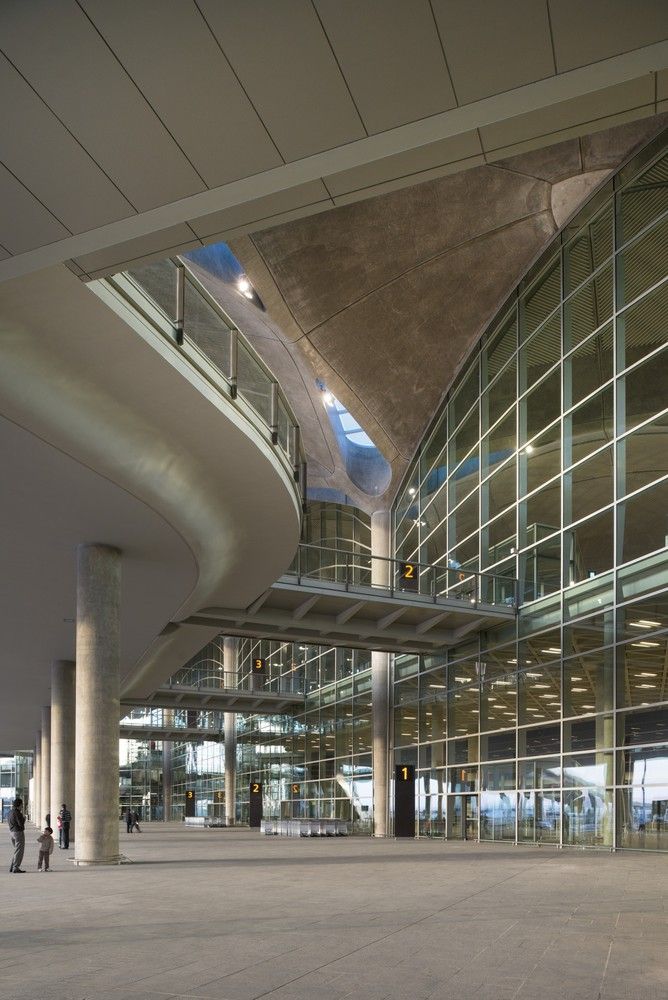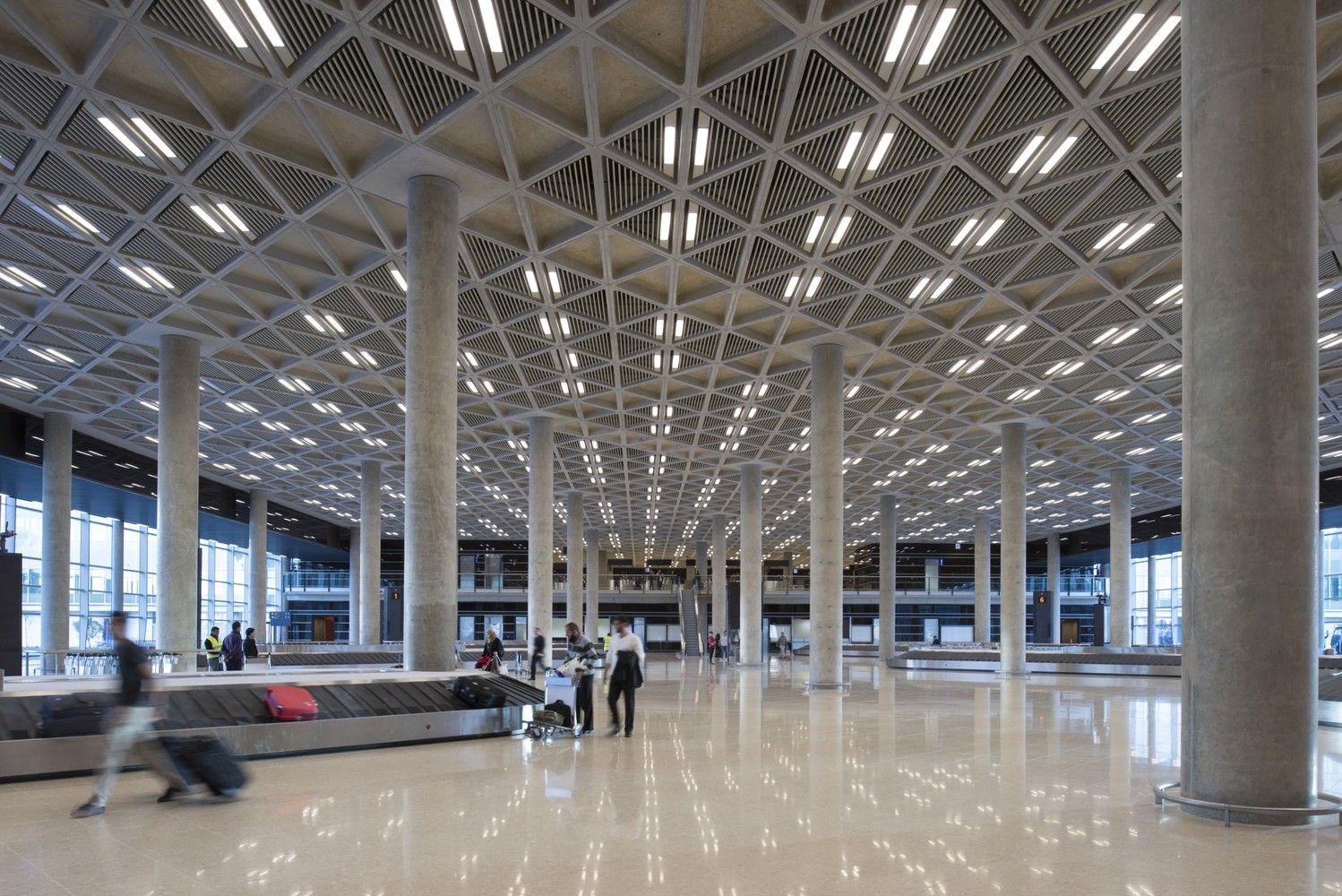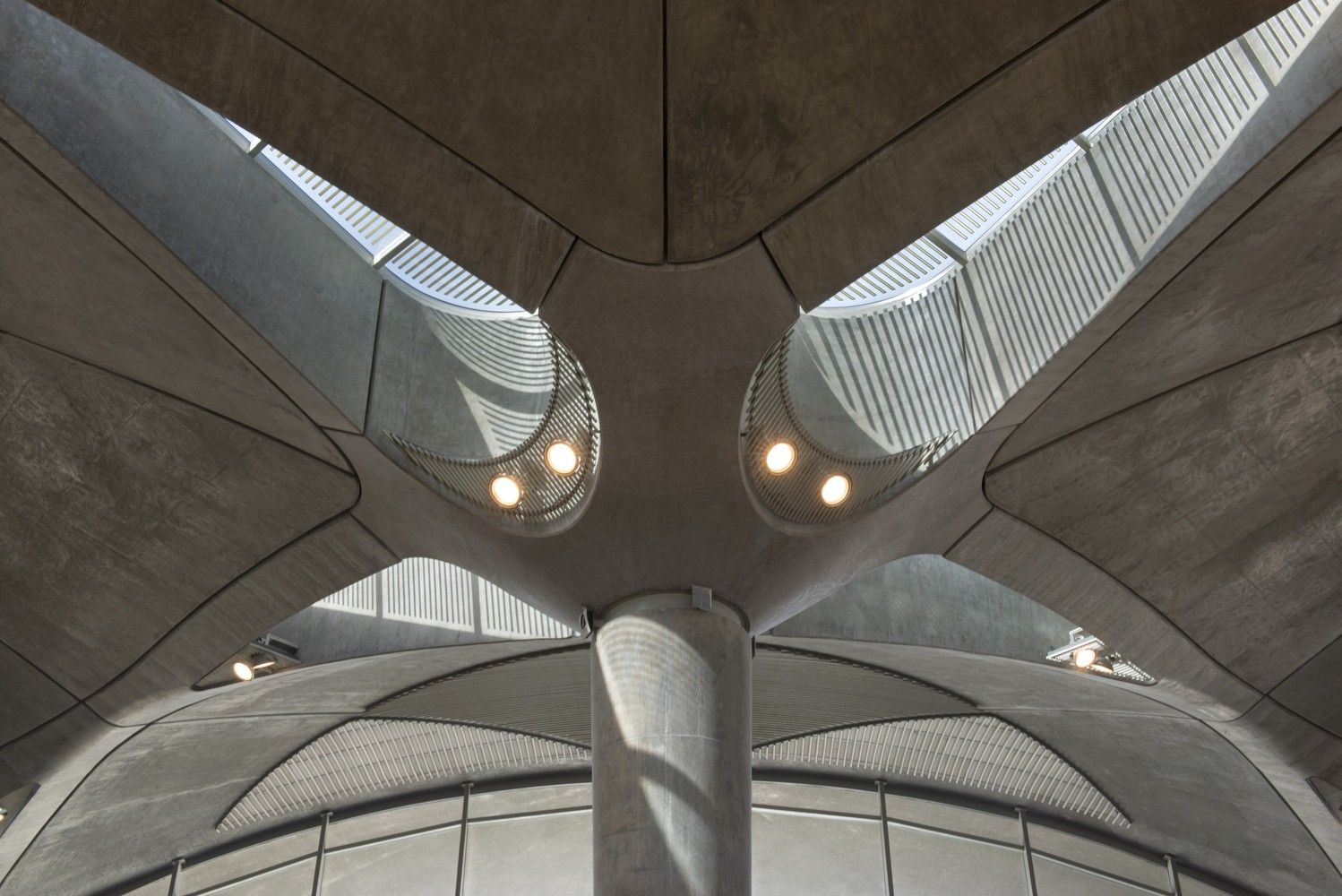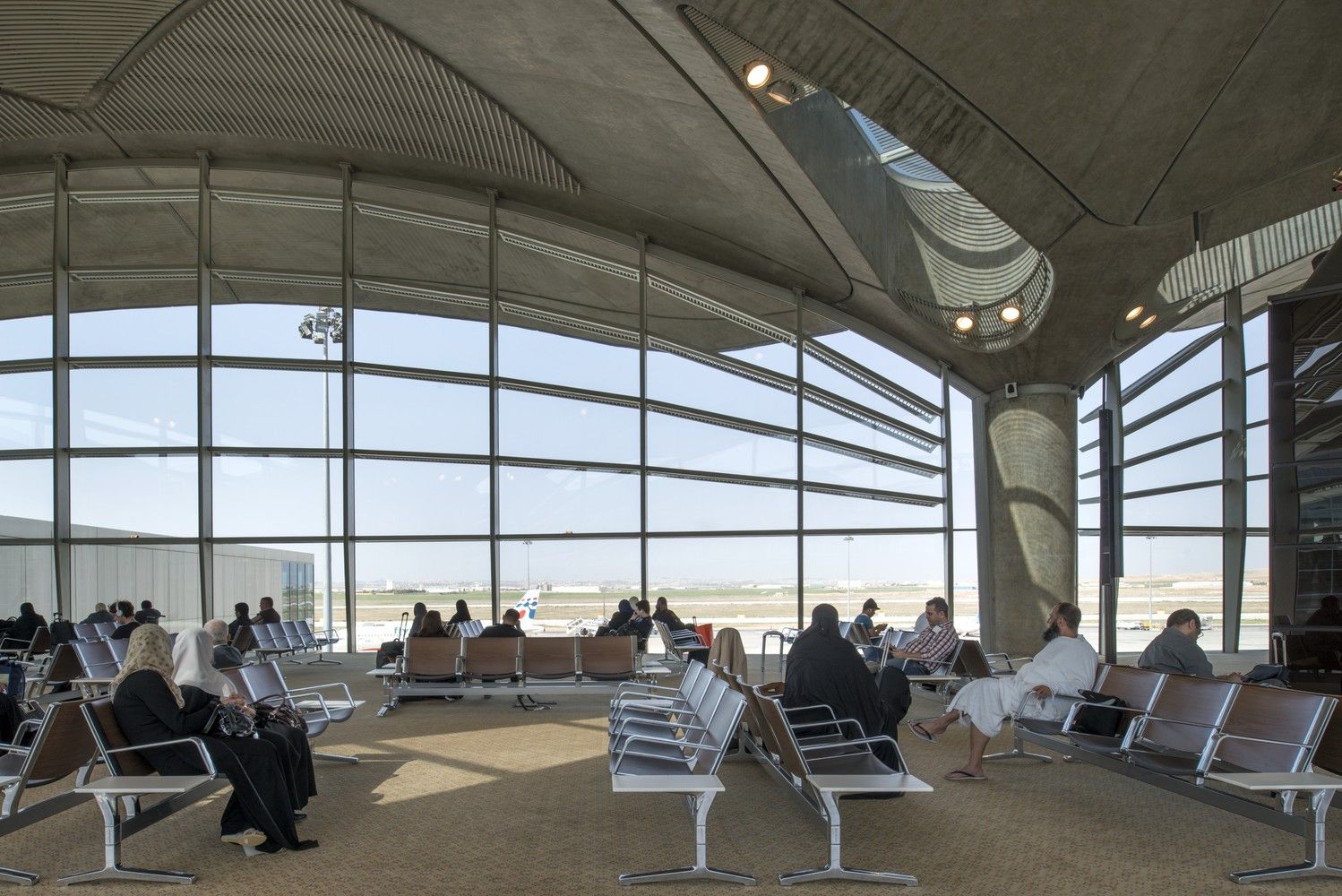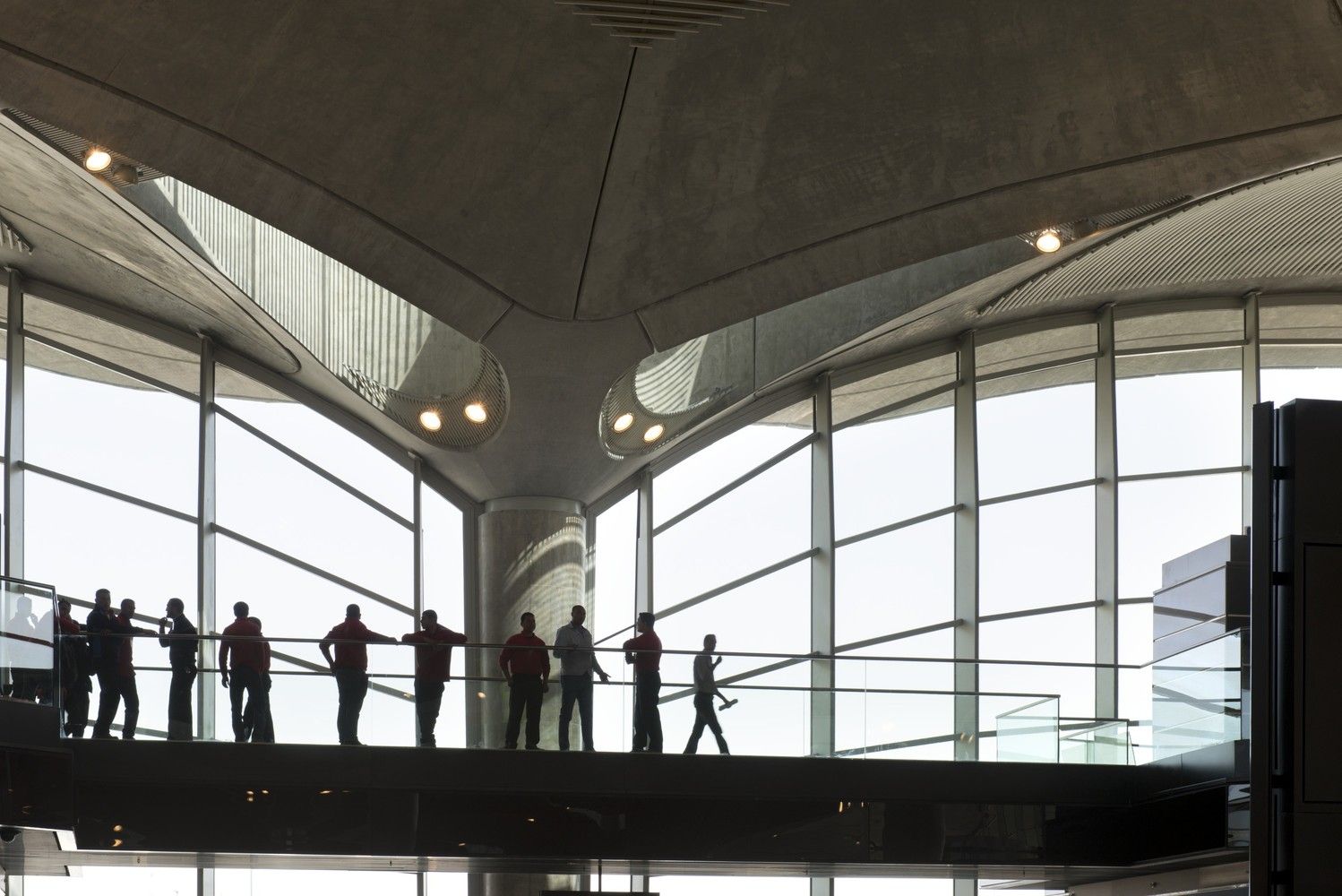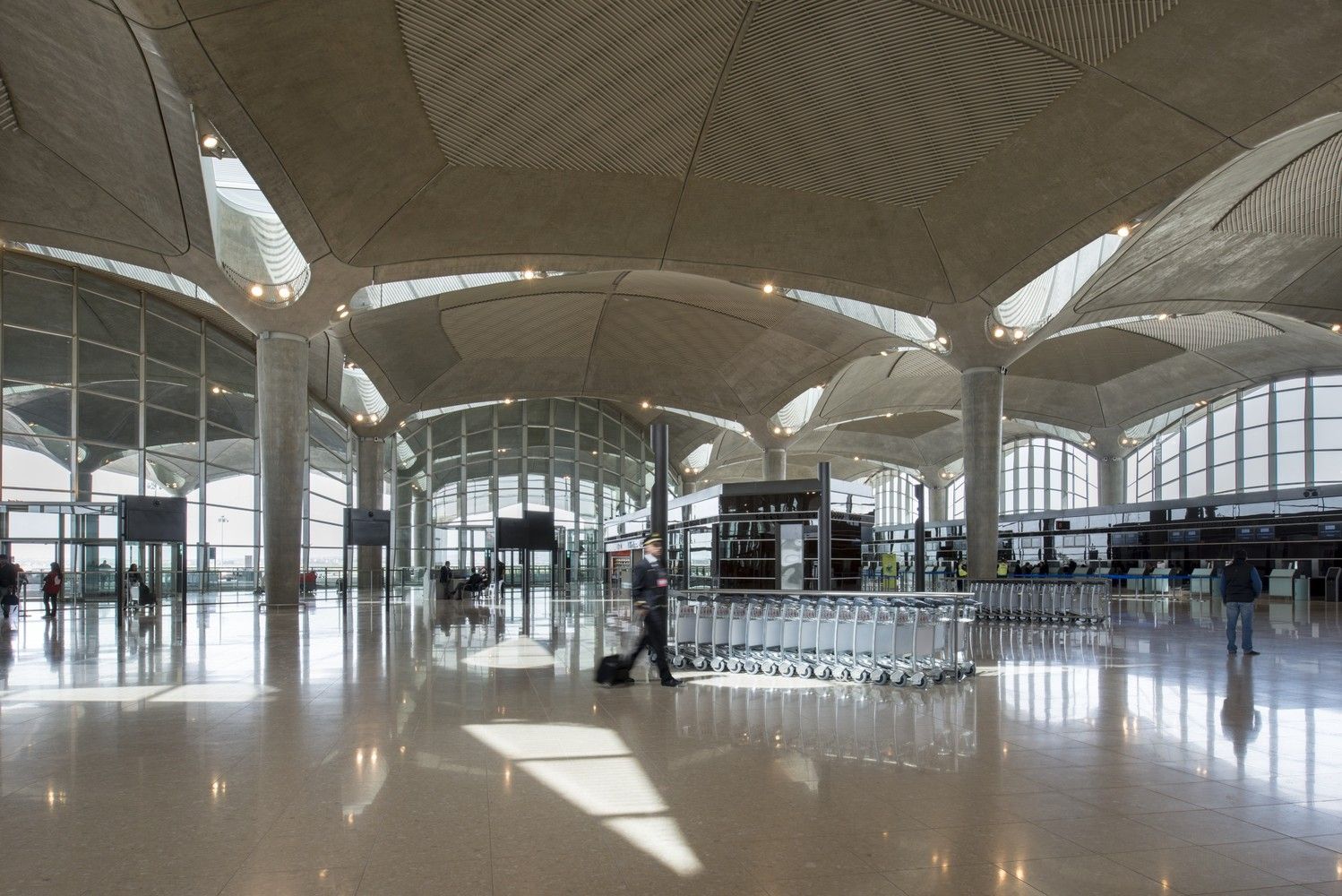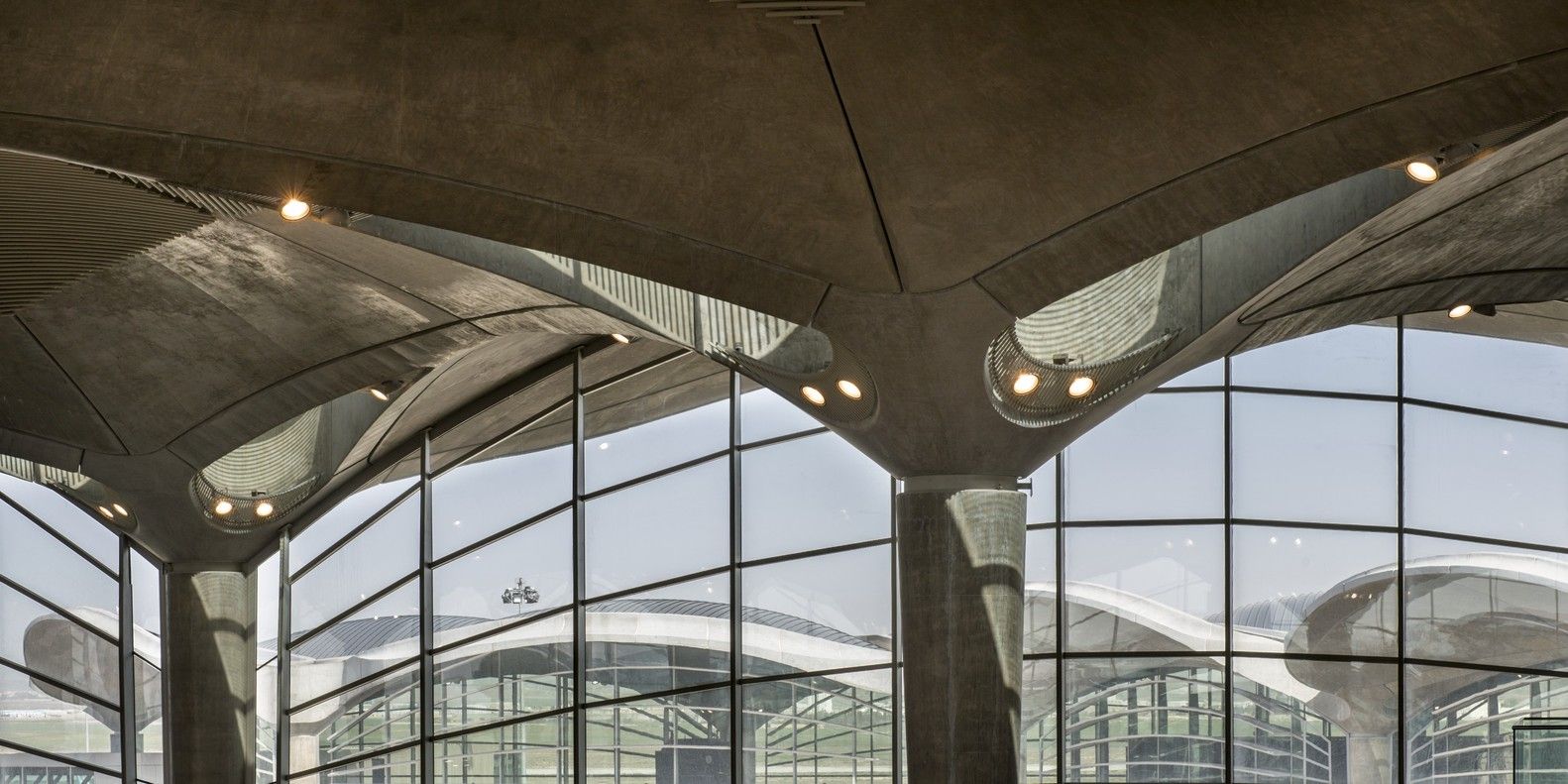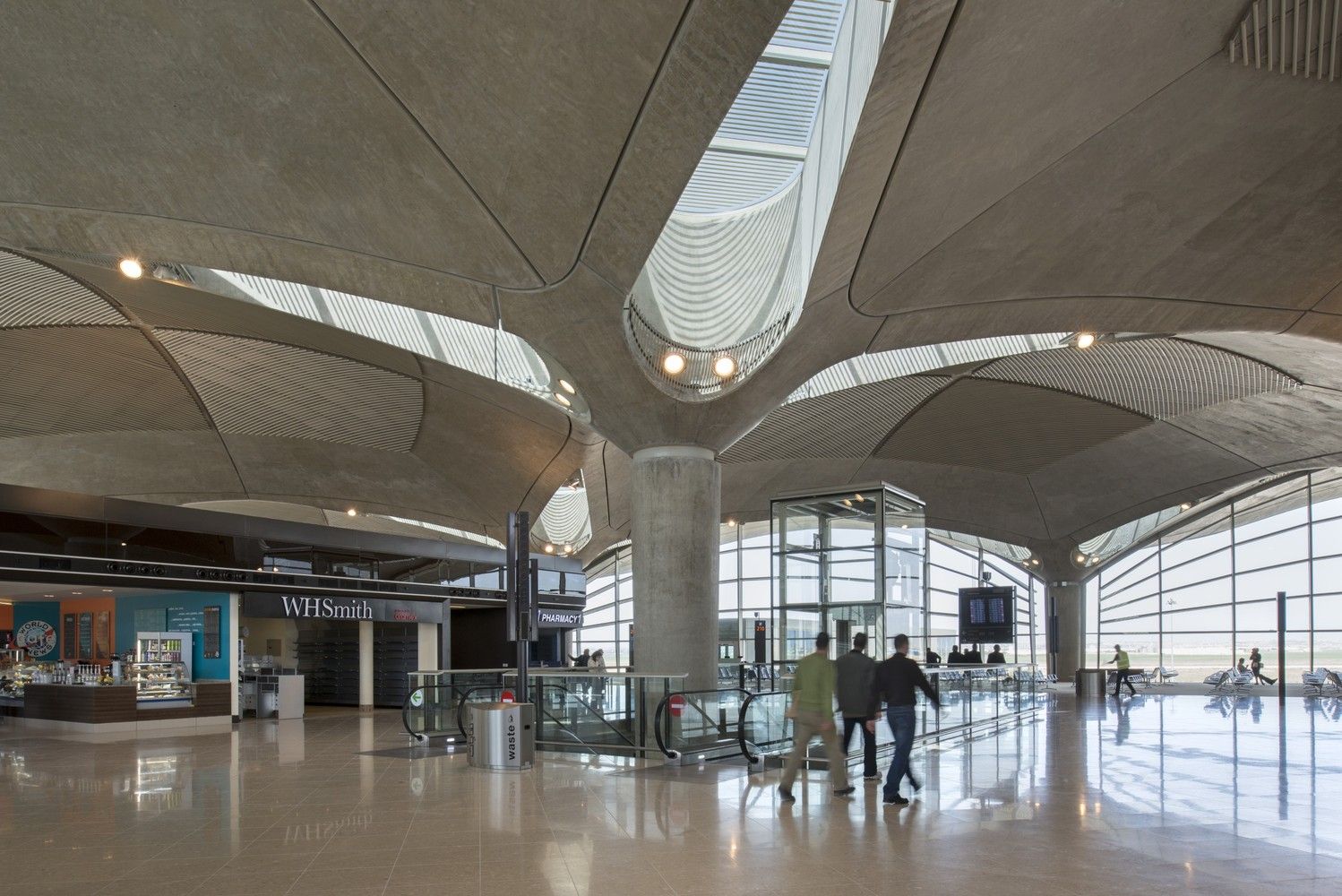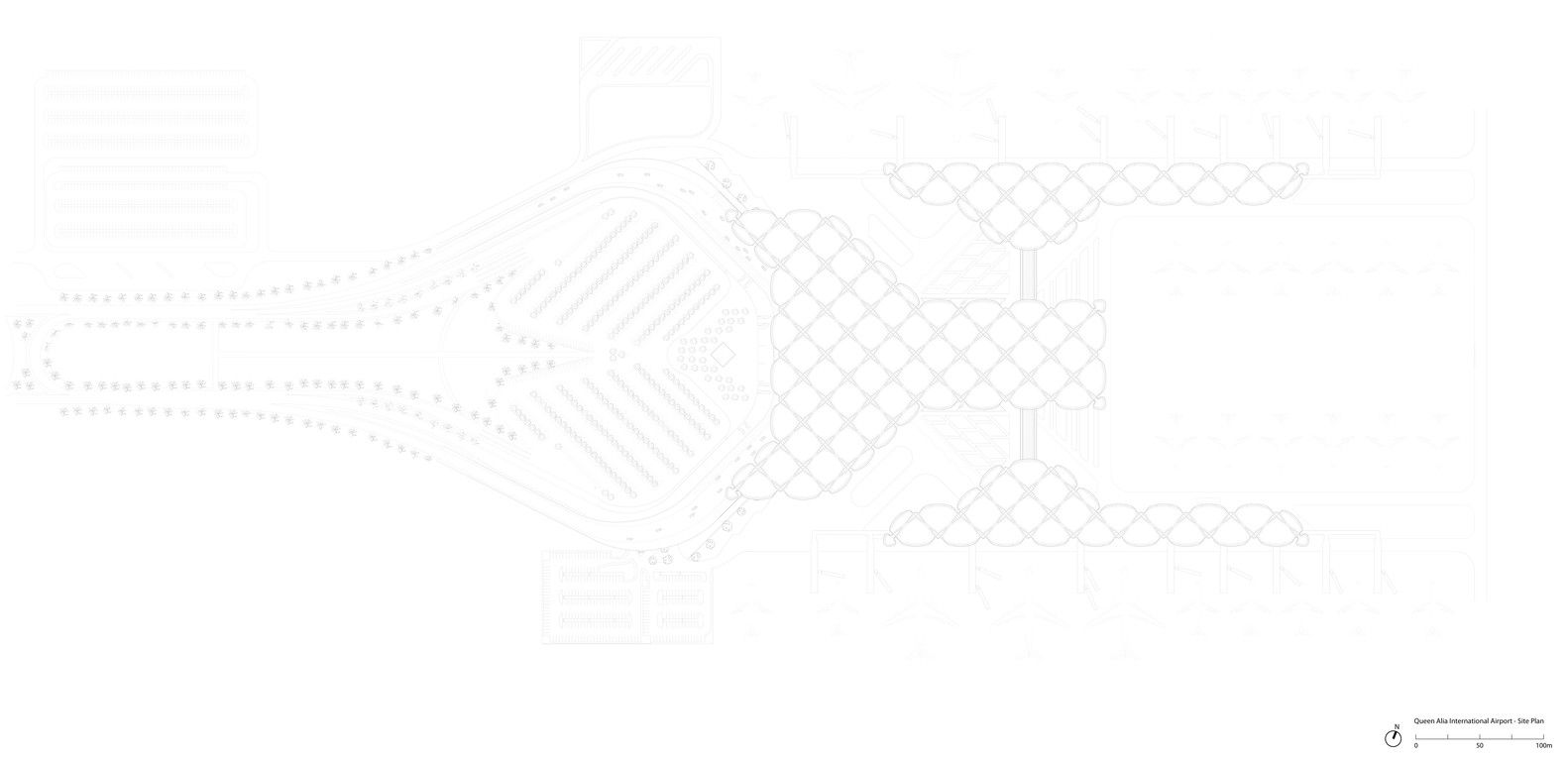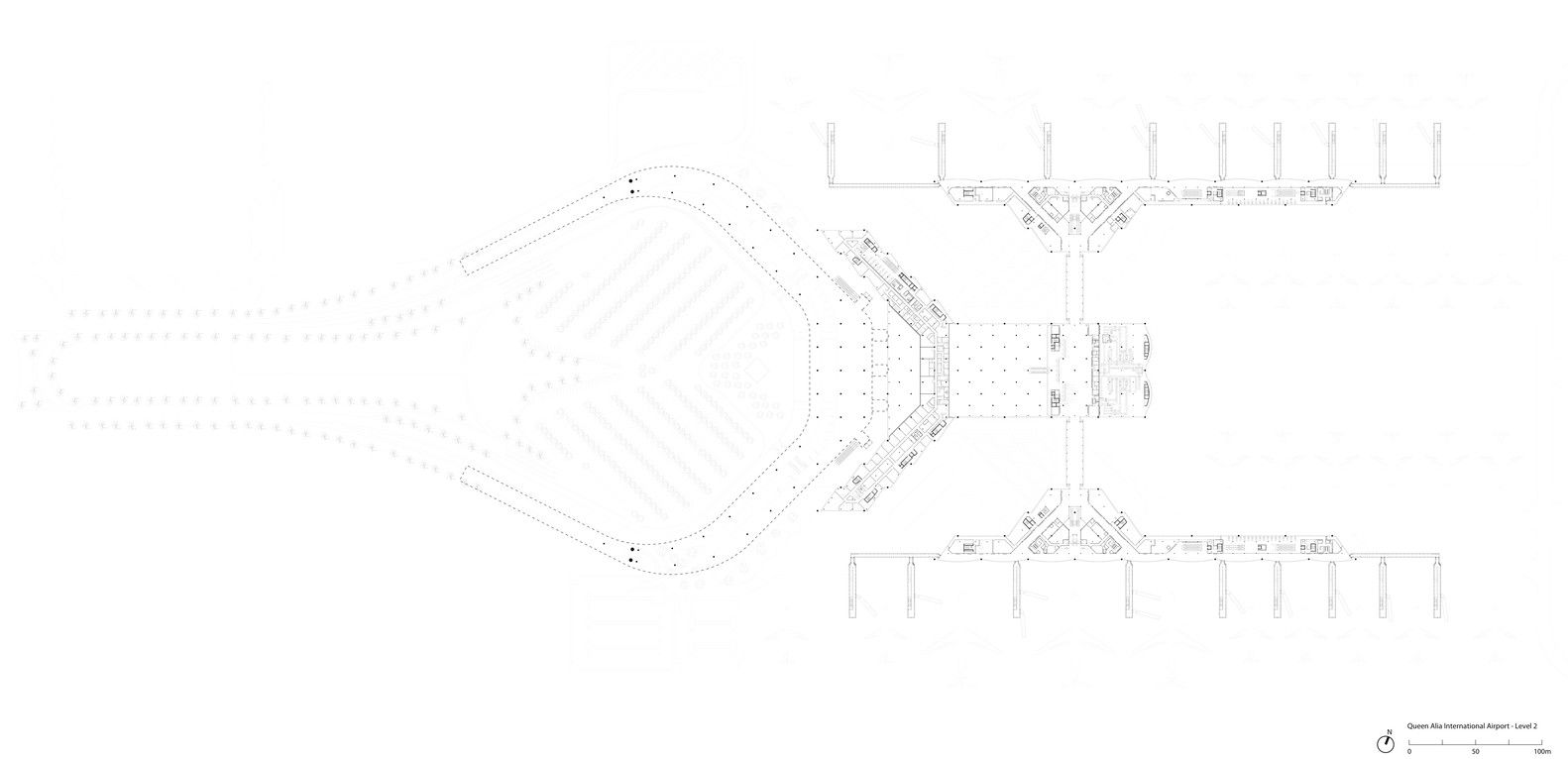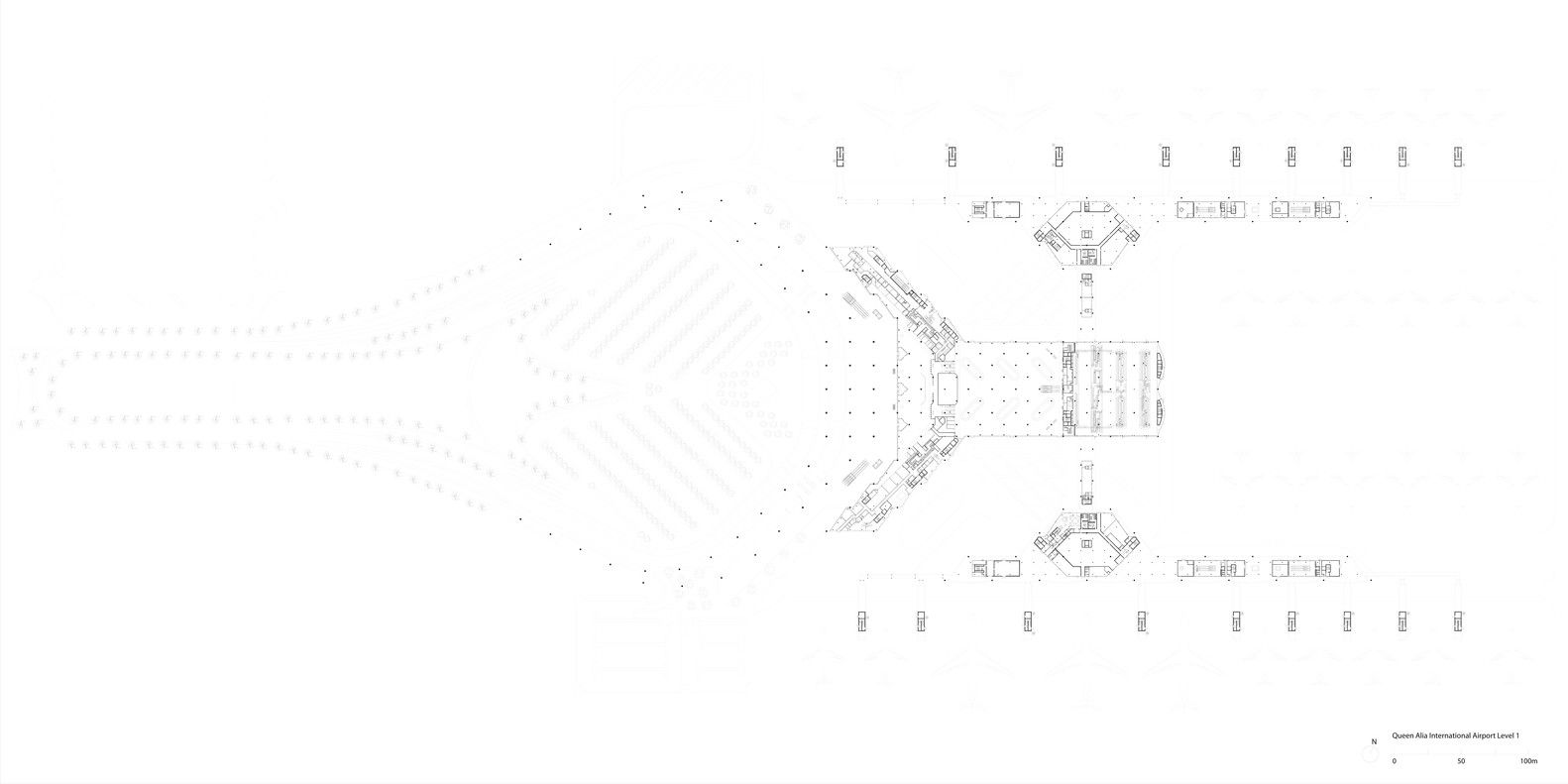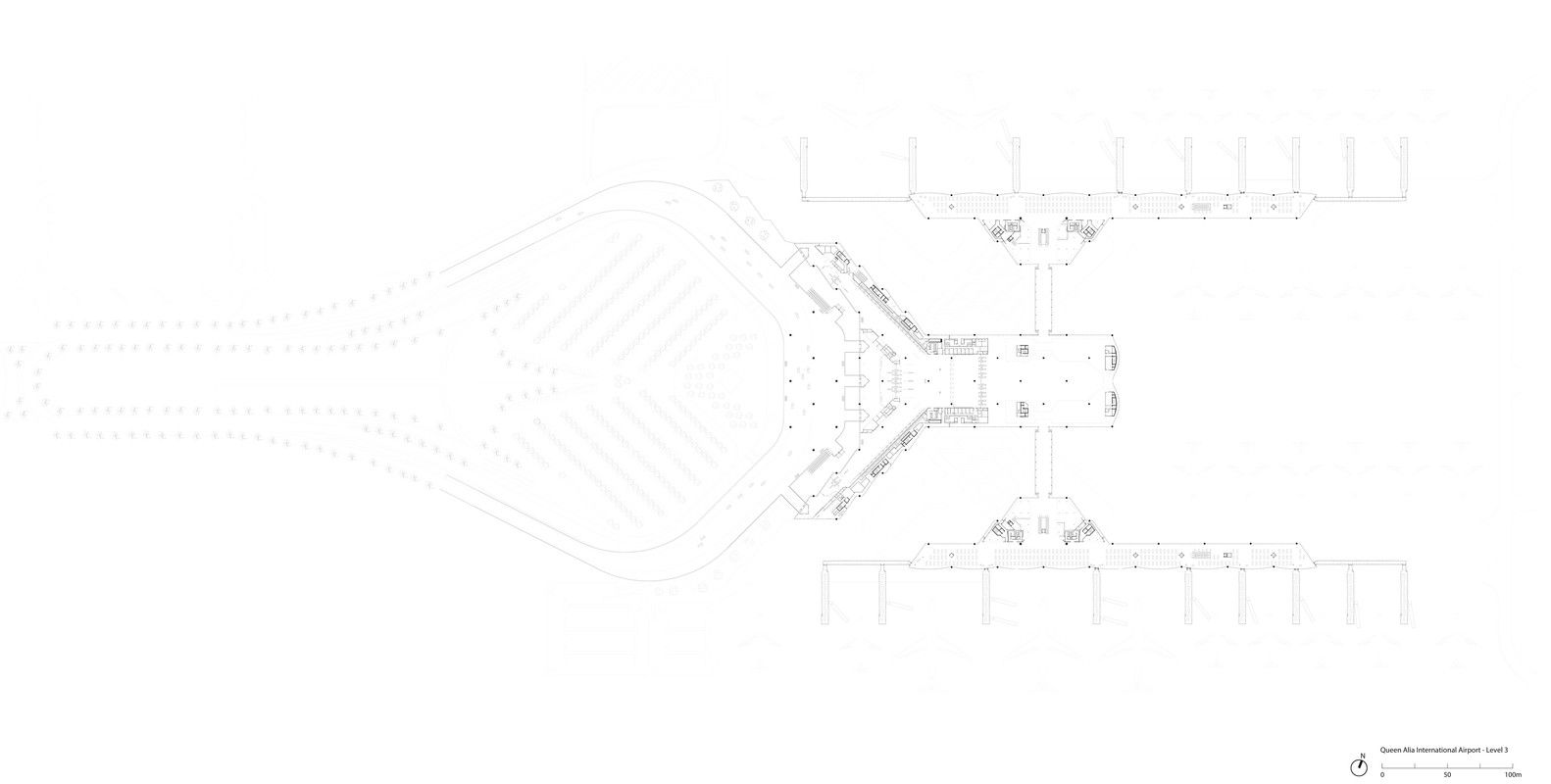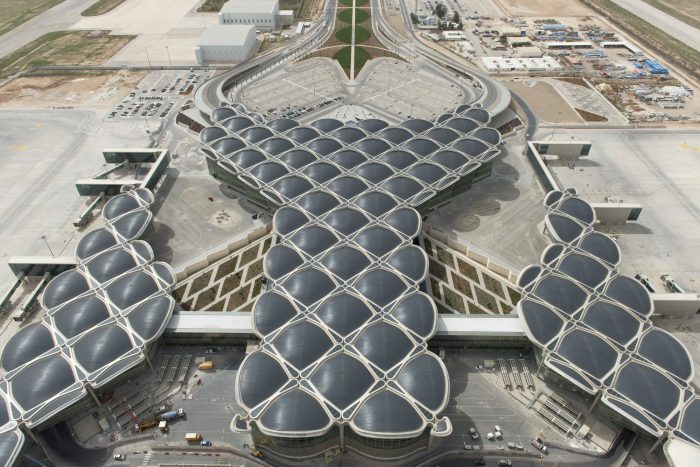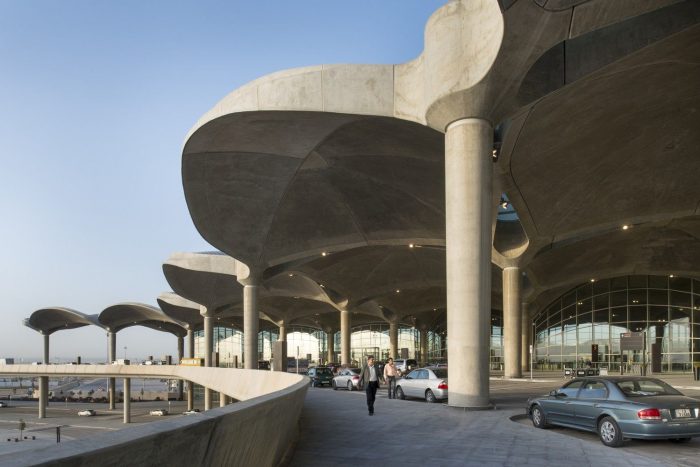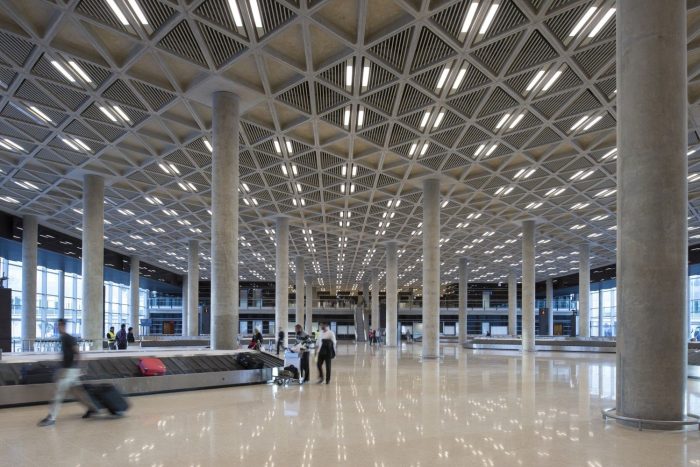Amman is one of the oldest continually inhabited cities in the world and the Queen Alia International Airport demonstrates a design resonating with a sense of place, referencing local architecture and inspired by local traditions. This highly efficient passive design by Foster and Partners is based on a flexible modular system that allows for future expansion and easy construction. The airport is predicted to grow 6 per cent per annum for the next twenty-five years, increasing in capacity from 3.5 million to 12 million passengers per annum by 2030.With this system in place as well as a strong emphasis on passive design, this airport is destined to become a dynamic symbol for Jordan.
The building is constructed largely from concrete to respond to the area’s climate where temperatures vary drastically from day to night. The concrete provides a high thermal mass and effective passive environmental control. From there the roof canopy comprises of a series of shallow concrete domes, which extend to shade the facades, branching out from the supporting columns like the leaves of a desert palm. The domed roof structure from above also begins to resemble the black flowing fabric of a Bedouin tent. Daylight floods the concourse through split beams at the column junctions and a geometric pattern based on traditional Islamic forms is applied to each soffit.
Two piers of departure gates run along either side of the central building containing the main processing areas and shops, lounges, and restaurants. Between the two piers are open-air courtyards whose plants and trees help to filter pollution and pre-condition the air before it is drawn into the air handling system. There are also reflecting pools within the courtyards to bounce indirect natural light into the airport. By having the terminal glazed on all sides to allow for views of the aircraft on the apron and aid orientation, a special shading system was designed. Horizontal louvers shade the facades from direct sunlight and also help to eliminate glare by having them concentrated in more exposed areas close to the columns. Local gravel was incorporated in the concrete structure to reduce maintenance requirements and to harmonize with the natural shades of local sand.
Staying attuned to its locale, in my opinion, is what makes the building stand out and become unique as a lot of the details are resolved through the inclusion of local traditions. Even though it is new architecture, there’s a presence about it that allows it to settle in within its site and provoke the feeling that it belongs there. As a final testament to the dedication to referencing the local culture the building is a demonstration of the Jordanian tradition of hospitality. It celebrates the custom for family groups to congregate at the airport as the forecourt has been enlarged to create a landscaped plaza with seating, shaded by trees, where people can gather to bid farewell or welcome returning travelers.
By
